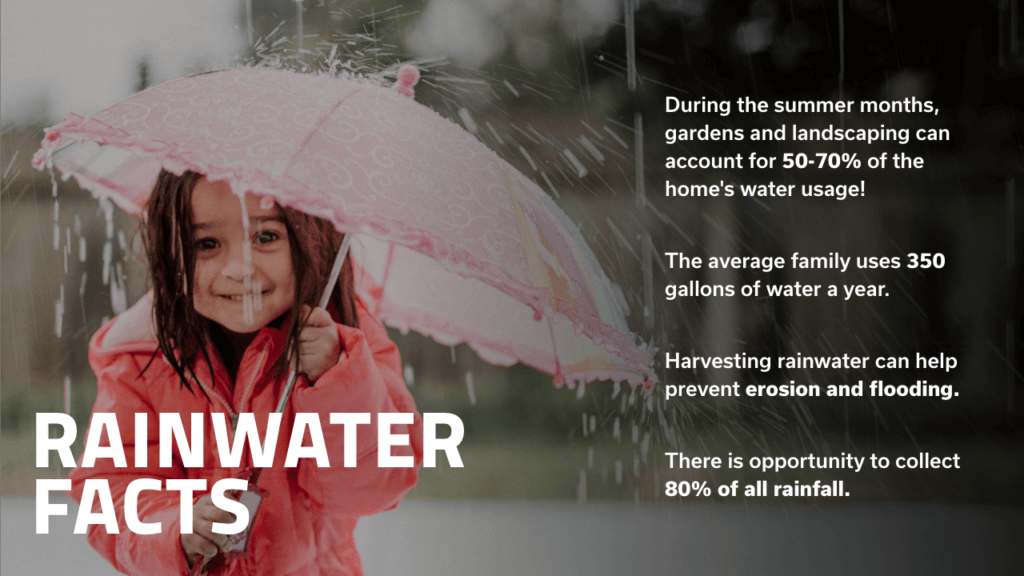How Can Gutterglove Gutter Guards Help With Rainwater Harvesting?
The start of a new season is an excellent time to consider other fresh home improvement ideas, especially those that lead to a positive environmental impact. Spring is here, and with it comes April showers and overflowing gutters — it’s time to dig out the muck and leaves from the previous months. Gutterglove’s stainless steel gutter guards employ micro-mesh technology that prevents clogs and even nuisances like pine needles. These simple installations do double duty; our gutter guards can also improve rainwater collection, a strategy that upgrades the overall sustainability of our homes.
Why Collect Rainwater?

Freshwater is a scarce resource; billions of people experience water shortages during drought months. For example, in the U.S., Californians are no stranger to statewide water rationing regulations; meanwhile, gallons upon gallons of rainwater seep into the ground and flow out to the Pacific. Capturing this resource, known as rainwater harvesting, is a critical strategy toward combatting these freshwater shortages. As supply dwindles, clean water costs spike — except rainwater is always free despite the laws of supply and demand.
What Is Rainwater Harvesting, and How Do Gutterglove’s Gutter Guards Help?
Basic rainwater harvesting requires three easy steps: collecting, redirecting, and storing for later use. Rain moves through the gutters and downspout, eventually pooling in a strategically placed plastic barrel. Water comes out of the sky clean, but it quickly picks up debris once it lands on our roofs and flows to the gutters. Most gutter guards are made from plastic and do little to prevent contamination. Gutterglove guards work like a fine-mesh strainer, prohibiting even tiny particles from polluting the rainwater. These gutter guards are even Underwriter Laboratories (UL) certified for rainwater harvesting (NSF P151 and NSF 372); a credential awarded to tools that set the best practices for their respective industries. The rain from the roof flows effortlessly through the micromesh, a barrier that keeps gutters from clogging and maintains the overall quality of the water in its storage container.
How Does Rainwater Help Your Household, Inside and Out?
Now that we’ve collected all this free, clean rainwater, what can we do with it? Rainwater is gentle and full of nitrates, so it’s an excellent option for naturally nourishing your plants; traditional groundwater contains added chemicals, salt, and minerals that can harm plant life. You can also depend on rainwater’s slight acidity to help improve your soil’s overall health. Most tap water is more alkaline to protect metal pipes and plumbing infrastructure, but your indoor and outdoor plants actually prefer a slightly acidic environment. Finally, in drought areas, storing rainwater from the wetter seasons can mean the difference between a green lawn and a barren lot. Any measure of rainwater recycling leads to savings on a household water bill. In fact, some data suggest a rain barrel can save homeowners as much as $35 each month. Environmentally, even the most basic rainwater harvesting system helps divert water from overflow sites that can erode your landscaping efforts and pollute nearby bodies of water (especially if rainwater is picking up chemicals along the way). Click here to learn more about gardening with rainwater.
How Do We Get Started?
To implement a DIY rainwater harvesting system at home, start with a large tank or another clean storage vessel. Most home improvement stores have plenty of options. Place the rain barrel near a downspout; raise the barrel off the ground and make sure it is level and leak-proof. Install a downspout diverter, a device that redirects water from the downspout. These are easy to install, requiring a basic drill and a few screws. A simple hose connects to the diverter and feeds the rain barrel. At-home rainwater collection systems like this require minimal maintenance besides general gutter upkeep, hence why Gutterglove products shine. Rainwater harvesting can quickly grow in complexity (e.g., pumps, specialized filters, and UV disinfection technology) depending on how it’s used in the home. No matter the intricacies, Gutterglove’s gutter guards work with any rainwater catchment system and naturally filter water from the start.


